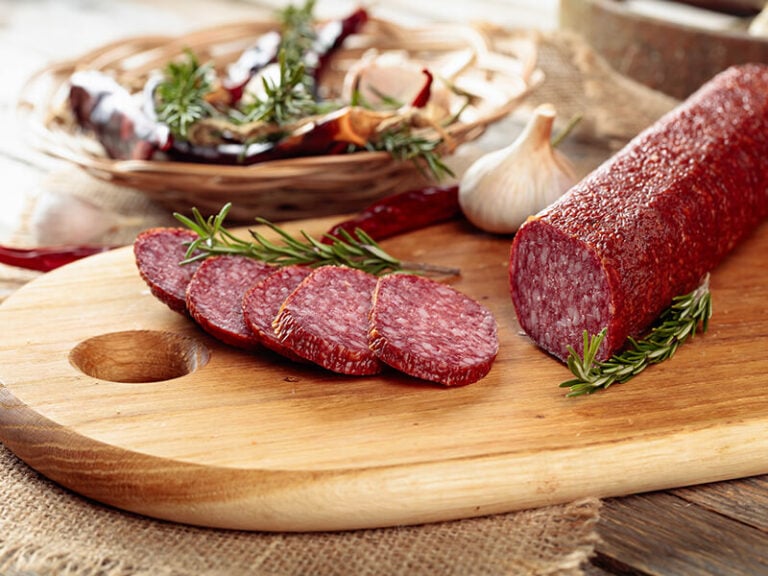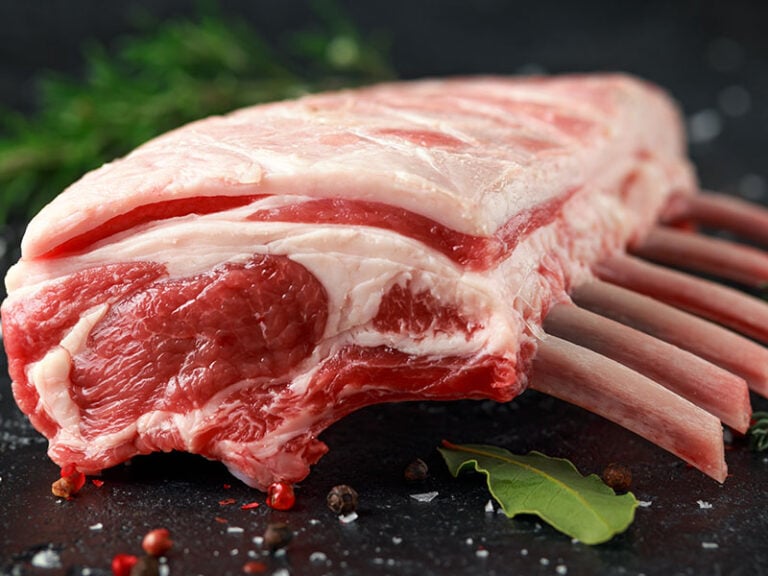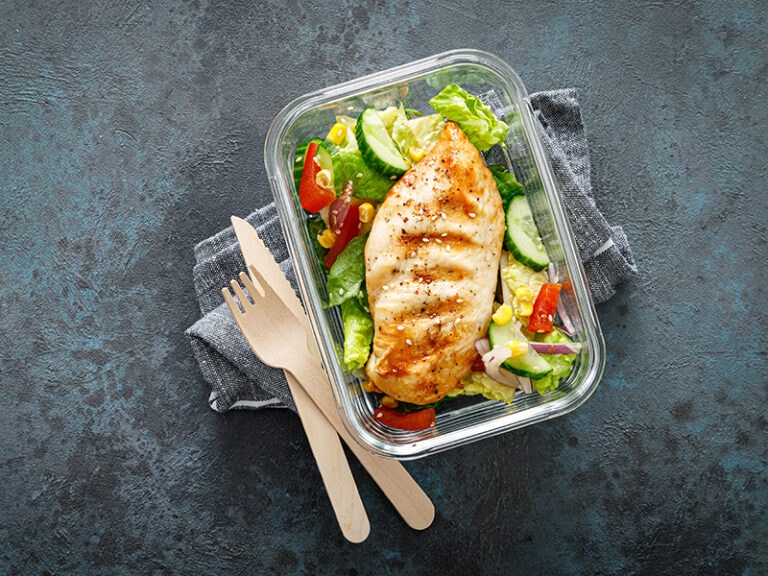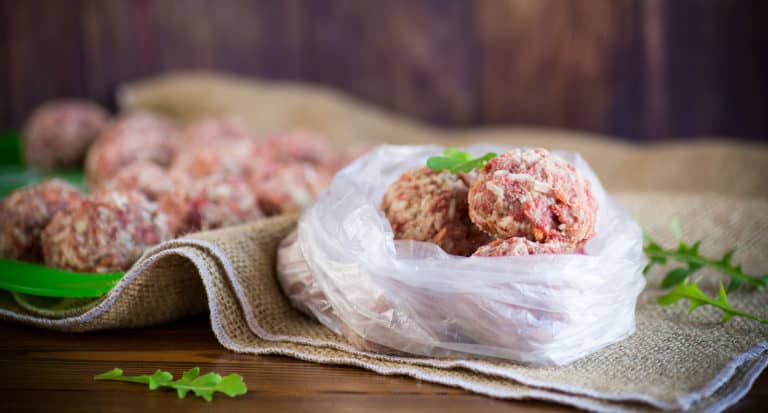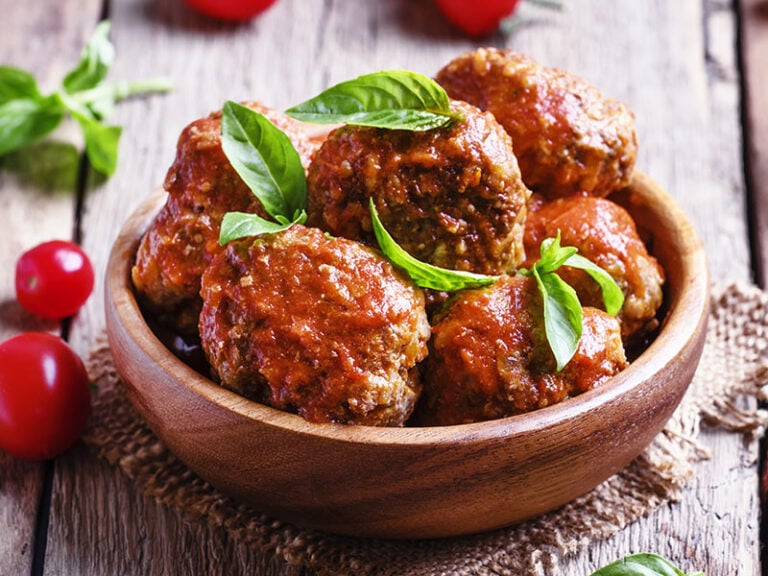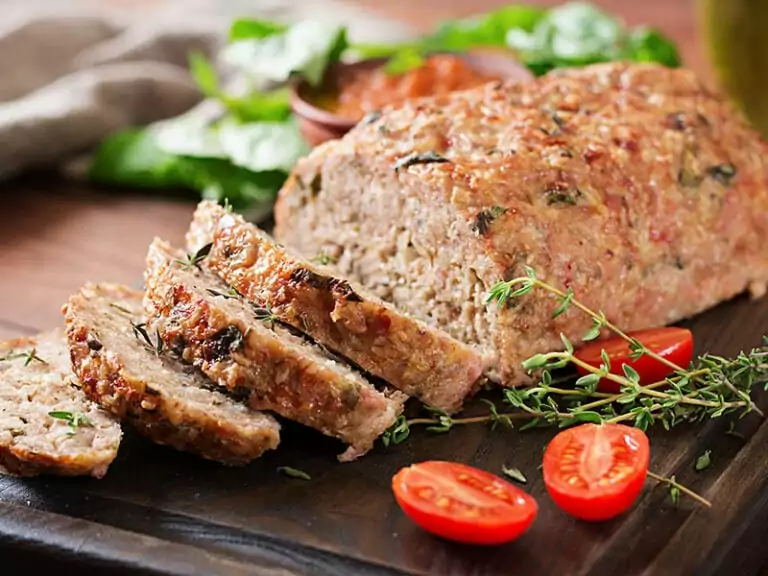Knowing how to store raw meat in the fridge is very important. You don’t want to have to buy new raw meat right before every meal, do you?
You may find yourself with a bunch of questions, especially if this is the first time you have to deal with raw meat. Where should you start? How many steps are there? What is there to know about raw meat and fridge? Calm down, read this post carefully, and you’ll find the answer.
Even if you’ve handled raw meat before, this post can still give you some useful tips. Don’t go anywhere; let’s learn how to be a pro in managing your kitchen.
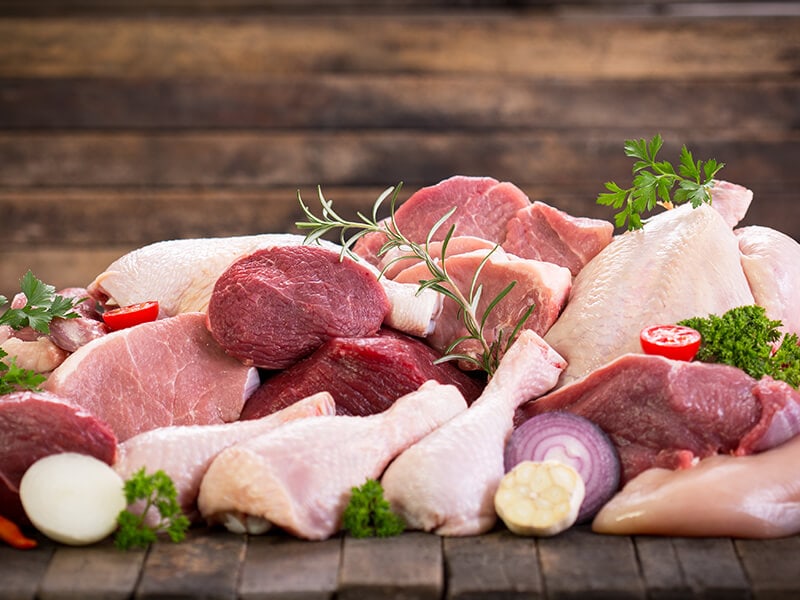
Why Does Raw Meat Need To Be Stored In The Fridge?
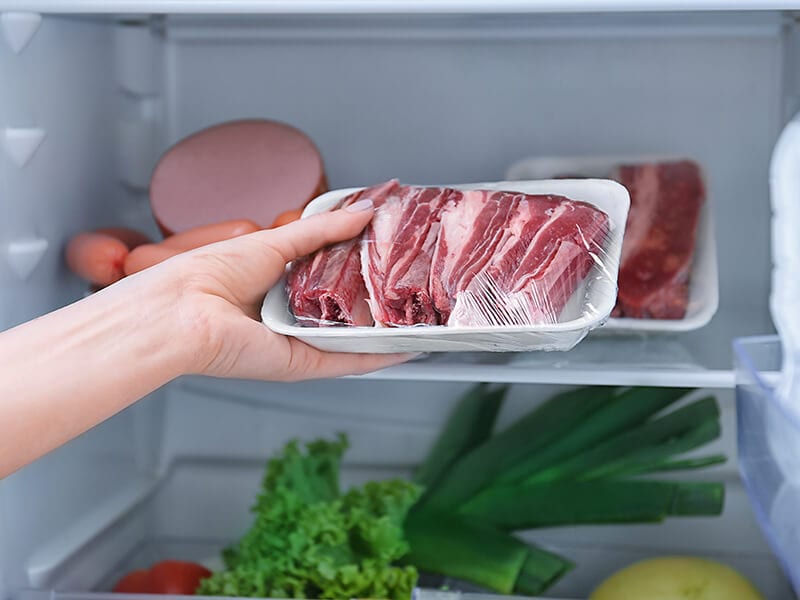
Before knowing how to store raw meat in the fridge, you may want to know the “why”. The answer is very simple. Storing raw meat in the fridge is the way to make sure it stays healthy.
Raw meat, which comes directly from animals, usually contains bacteria such as salmonella and yersinia (1). They may come from the animal or other factors such as the clothing, hands, and equipment that raw meat is exposed to during the slaughtering process.
So, to prevent these bacteria from harming your health and/or making your meat inedible before your cooking time, you need to handle your raw meat properly.
This task requires care and caution, and the best way to do it is to store it in your fridge. But don’t think putting the packet(s) of raw meat you’ve just bought into your fridge is all you have to do! Storing raw meat in the fridge is not that simple!
If you’re not careful, your raw meat could easily cause cross-contamination, which means the bacteria it contains can make a trip to other foods and ruin them all. Eating foods made from contaminated ingredients is highly likely to send you to the hospital or even underground.
Where Should Raw Meat Be Stored In The Fridge? And Why?
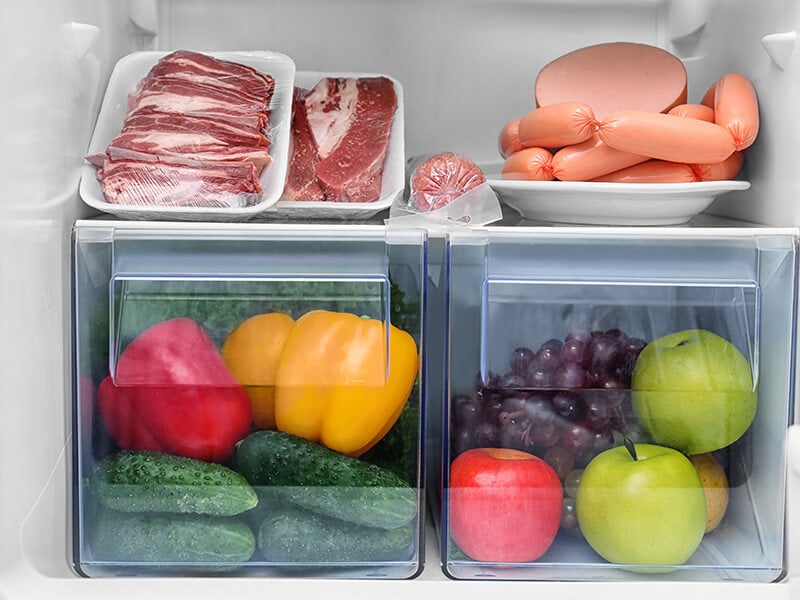
Now you know why raw meat has to be stored in the fridge, but where?
Well, many fridges have a specific drawer for raw meat. You can find where it is by checking the manual’s owner, especially if your fridge has many drawers but no drawer labels. This specific drawer has the ideal temperature and cuts your raw meat’s contact with other foods.
If your fridge isn’t one of those, the best place is the lowest compartment. It usually has the lowest temperature, which is ideal for preserving raw meat. Moreover, meat juice can’t drip on and poison other foods if you keep raw meat in the lowest space.
Which Type Of Container Is Best For Raw Meat?
There are many types of food containers. I am here to help you pick the best one for raw meat. It is ideal for storing raw meat inside Zip bags. Airtight containers are also good choices.
Zip Bags
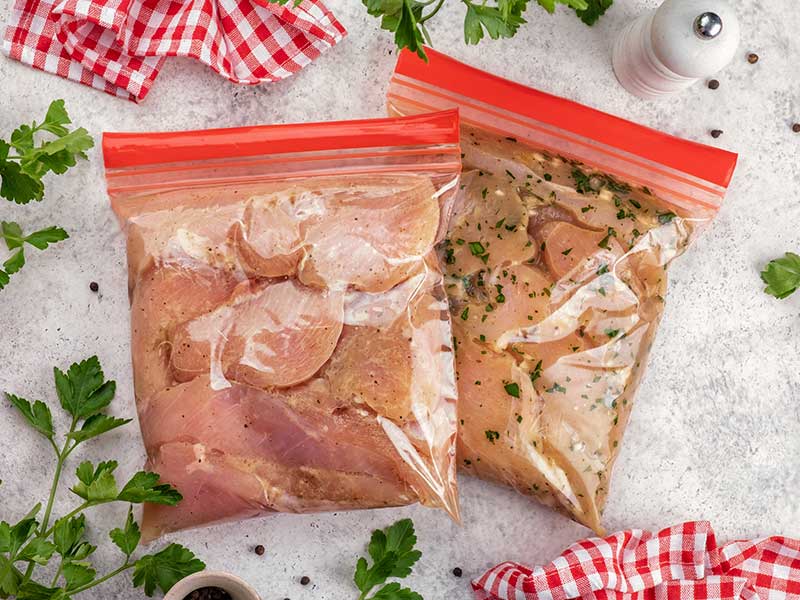
Zip bags are the best choice because you can easily get the air out of them. Air-free packets prevent bacteria and do not take up much space in your fridge. And they are reusable. With Zip bags, you can save your fridge space, money, and even the environment. Isn’t that wonderful?
Airtight Containers
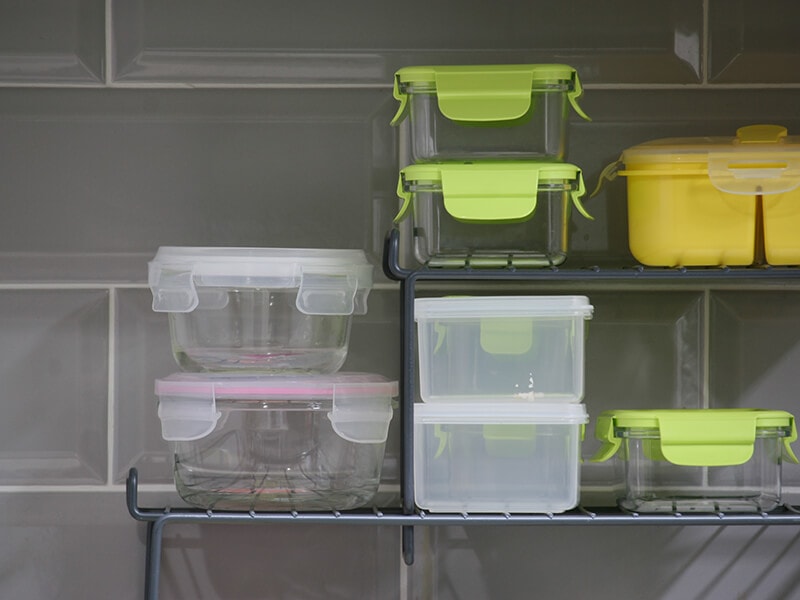
Airtight containers or freezer-friendly containers can also be chosen. They’re also pretty good at blocking bacteria from entering your food. They could also be reused if washed properly. The inconvenience of airtight containers is that they usually take up more space than zip bags, and the glass ones can be broken.
Friendly reminder: You should write the purchase date on a small piece of paper and stick it to the container. This way, you’re less likely to forget how long a piece of raw meat has been stored in your fridge and, thus, can use them before it gets spoiled.
Hey, do you wish to know how to get rid of plastic in your kitchen? The key is right here.
The Ultimate Guideline To Store Raw Meat In Your Fridge Properly
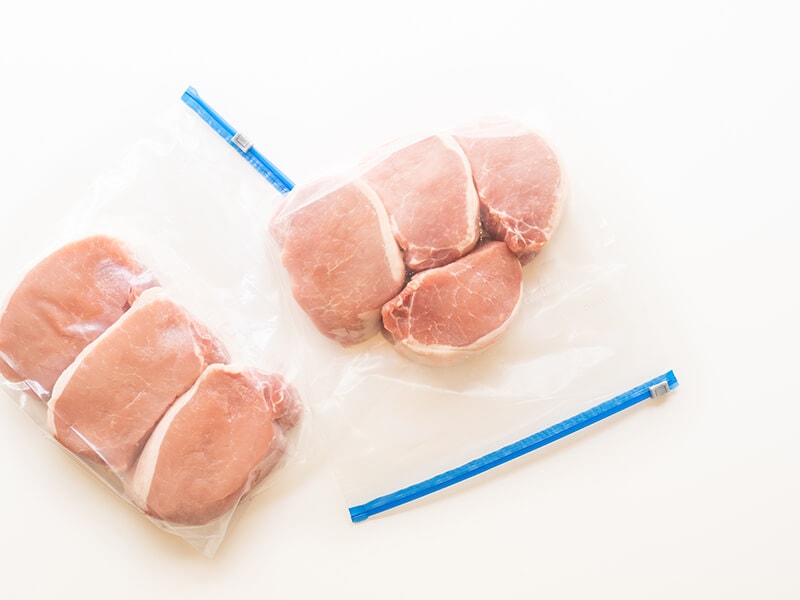
Not every home cook knows how to store raw meat in the fridge properly, and that’s why you may get different or even opposite pieces of advice from the ones you personally know. With these 5 easy-to-follow steps, you will be able to handle raw meat like a pro!
Step 1: Keep Your Fridge In Ideal Temperature Range
All types of foods, including raw meat, are best preserved when your fridge is between 38 and 40 degrees Fahrenheit (around 3.33 – 4.44 degrees Celsius). Check the temperature, and make adjustments if necessary. The guideline to do so will be provided in the next two sections.
Step 2: Wash Your Hands And All Utensils Thoroughly
Your hands and all utensils (cutting board, knife, etc.) are likely to carry bacteria. So, washing them carefully before working with raw meat will prevent the bacteria from spreading to your meat. It is even better if you put on clean cooking gloves after washing your hands.
Step 3: Cut Your Meat Into Small Portions
A piece of meat with a large surface is an ideal place for the molds to grow. Thus, dividing your original big portions of meat into smaller pieces will lower the chance of it later ending up in the trash can.
Note: If your piece of raw meat is already in a good size, you can move straight to Step 4.
Step 4: Wrap Your Meat Correctly
With a proper wrap, bacteria are less likely to find and make a home in your meat, and the meat juice is unlikely to spread all over the place. Let the ready-to-store pieces of raw meat rest inside either Zip bags or glass/rigid plastic containers.
Step 5: Place The Properly Wrapped Raw Meat Inside Your Fridge
Check your owner’s manual to see whether your fridge has a specific drawer for raw meat. If it doesn’t, the lowest compartment is the best place. This way, even if something goes wrong with the wrapper, meat juice and bacteria still won’t touch and contaminate other foods.
How To Check The Temperature Of Your Fridge
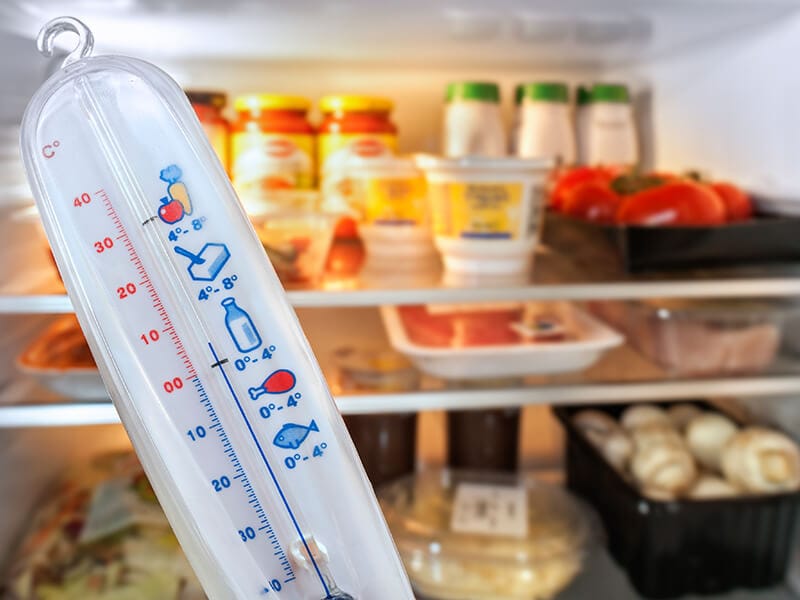
Checking the temperature of your fridge is highly necessary. A fridge that is too cold or not cold enough cannot preserve your foods and drinks at the highest level.
Modern, expensive fridges usually include a built-in thermometer to allow owners to check their temperatures easily. But if yours is not one of those, there’s still no need to worry. Just follow these very simple steps:
- Prepare a cup of water and a thermometer.
- Put the thermometer inside the cup.
- Let the cup with the thermometer rest at the center of your fridge.
- Come back to check the temperature after 5-8 hours. If the temperature is not in the ideal range, adjust it and check again until it’s good.
Note: You should use a candy or glass kitchen thermometer (2).
How To Adjust The Temperature Of Your Fridge
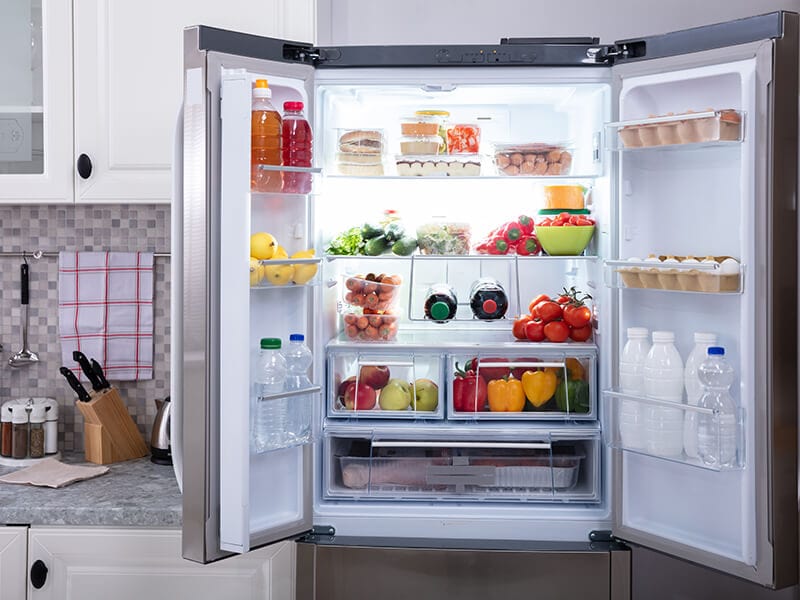
If the temperature of your fridge is, unfortunately, not in the ideal range, you need to adjust it until it’s good. This will not be a challenging task; I got you covered.
How to set your fridge at a certain temperature depends on its temperature control system. In general, there are 3 types of temperature control systems, which are: sliding gauge, temperature dial, and digital keypad.
Changing Temperature Using A Sliding Gauge
Many fridges allow users to change the temperature with a sliding gauge. If you haven’t noticed where it is before and/or don’t even know what it looks like, this section is a must-read.
Step 1: Find The Sliding Gauge
Check the upper half of the fridge. Near the gauge, you should see numbers from 1 to 5 (or 7 in some cases). In some other fridges, there is the word “colder” written left or right on the gauge instead of numbers.
The scale/word is there to tell you the temperature range of your fridge, while the position of the switch indicates how cold it currently is.
Step 2: Move The Switch
Move the switch to the left to heat your fridge and to the right to cool it down. Read the guiding numbers/words, follow through, and you’ll be just fine.
Changing Temperature Using A Temperature Dial
If your fridge doesn’t have a sliding gauge, it’s likely to have a temperature dial. A temperature dial is also easy to deal with, just follow my guide!
Step 1: Search For The Temperature Dial
First, look for the light bulb inside your fridge. The temperature dial will usually be nearby. It will have either numbers or notches as the indicator of the temperature range.
Step 2: Turn The Dial
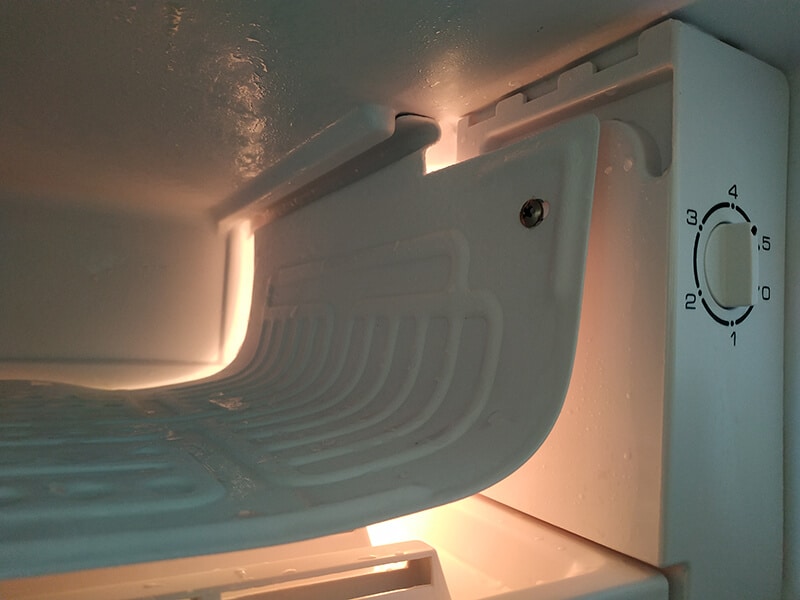
In general, turning the dial to a higher number will decrease the temperature and vice versa. In case the dial has notches, a clockwise turn will make your fridge cool down.
Changing Temperature Using A Digital KeyPad
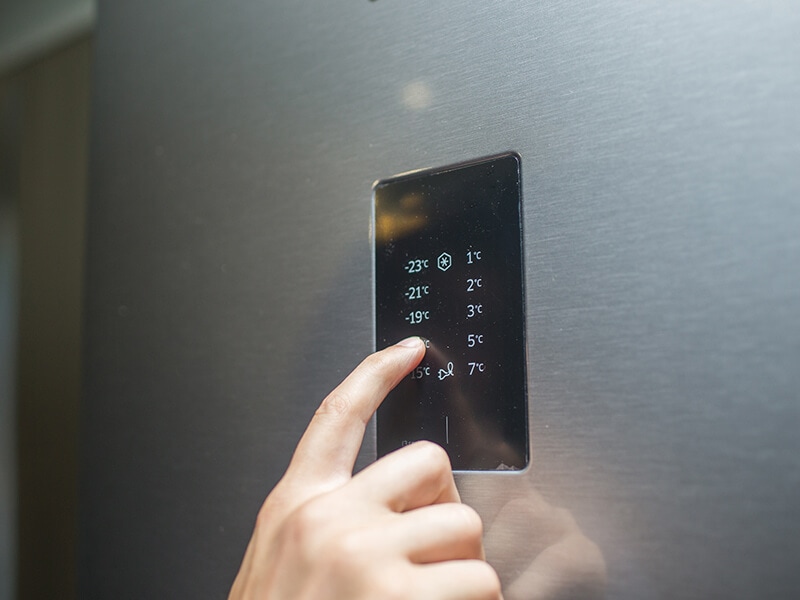
What is the benefit of modern, expensive fridges? They allow users to easily check and adjust the temperature by using a digital keypad on the door.
Some keypads work with “+” and “-”; some have arrow buttons, and some have “warmer” and “colder”. All you have to do is press the right button, and don’t be confused between Fahrenheit and Celsius.
Remember: Always make a series of minor changes instead of a sudden, major adjustment to ensure your fridge won’t malfunction.
Extra Tips To Maintain The Quality Of Your Fridge
A new, good fridge often costs a lot of money. So, for your current fridge to last long, let’s use these tips:
- Do a thorough cleaning of your fridge routinely.
- Immediately toss the spoiled food and check the remaining food’s quality after that to ensure you do not miss anything.
- Avoid storing too many things in your fridge at the same time.
- Let hot food cool down before putting it into your fridge.
- Only open the fridge when necessary, and do not keep it open for too long.
- Put frozen raw meat inside a food container (plastic box, bowl, etc.) or on a plate when you let it thaw so that meat juice will not leak.
- Separate cooked and uncooked foods.
- Use what you store as soon as possible. What goes in first should go out first!
The correct way to clean your fridge will be displayed in this guide.
When To Remove Food From Your Fridge?
As usual, I’m here to help you find out which food is spoiled and must be thrown away immediately. Don’t skip this section!
Let your food rest in the trash can if you find one of the following things:
Mold
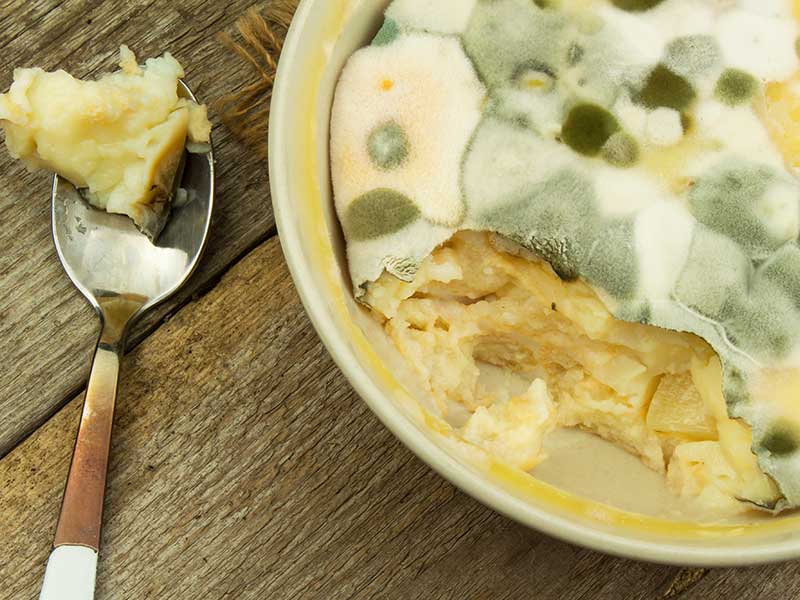
If some black/blue/yellow/green spots appear on the surface of your meat/vegetable/fruit/dairy product, or the food container, it is highly likely that your food is no longer edible.
Bubbles
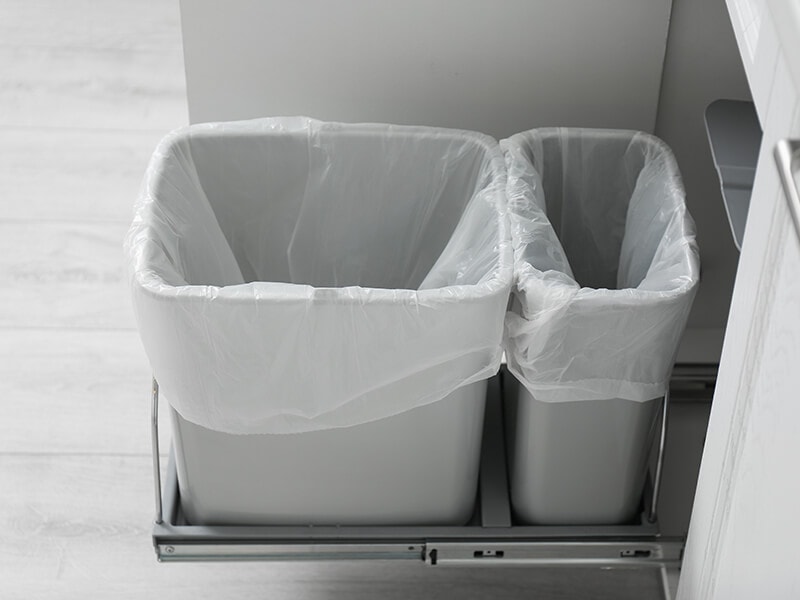
Bubbles not formed during the cooking process of soup and curry tell you that the food is no longer edible. Just let it rest in the trash can!
Smelly Odors
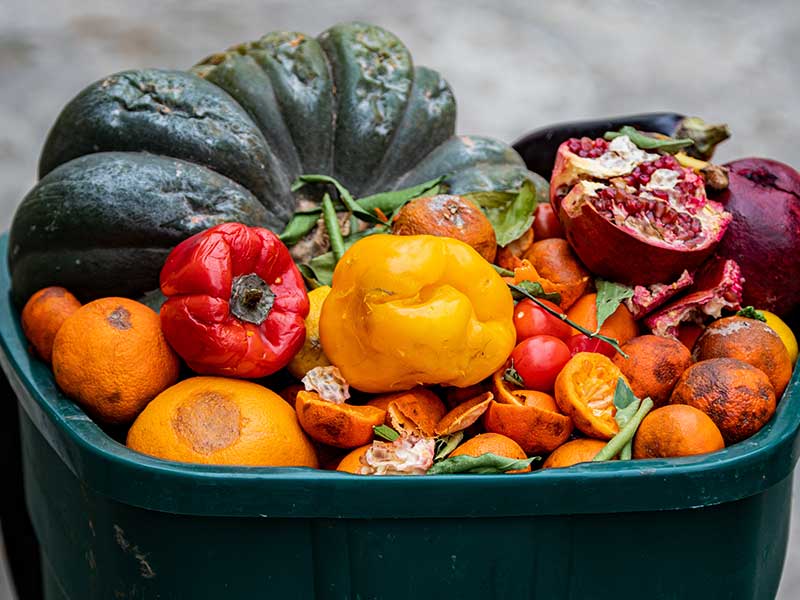
The rule is very simple. If food smells bad, it won’t taste good anyway. No other thing needs to be considered! The smell usually comes with mold and/or change in texture.
Change In Texture
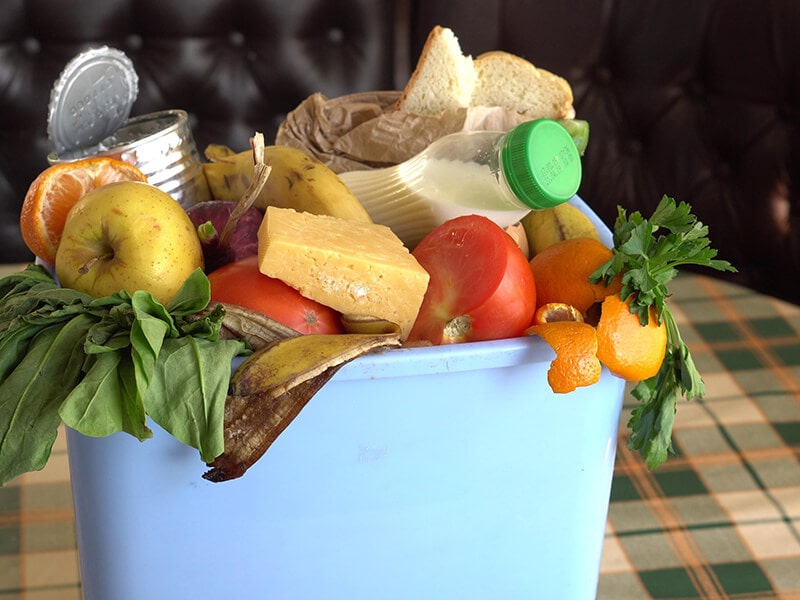
This frequently happens to dairy products, fruits, and vegetables. Dairy products such as cheese, butter, or milk may become soggy or chunky. Fruits such as apples and vegetables such as cabbage and broccoli may become squishy or concave.
Whenever you find a dairy product or a vegetable no longer in the condition when you put them in your fridge, throw it away. However, some softened fruits may still be used for baking.
How Long Can A Fridge Preserve Raw Meat?
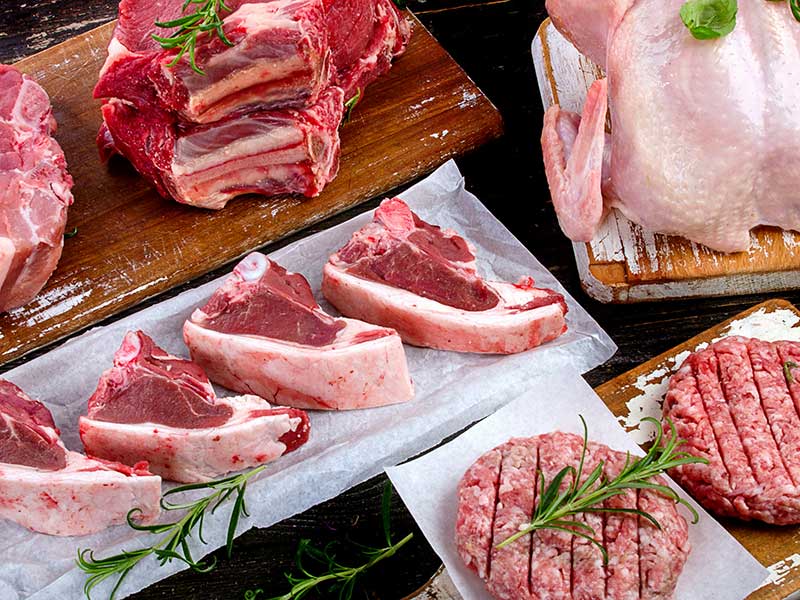
There are many types of meat, and their durations in the fridge are not always the same. Generally, most types of raw meat cannot last more than 5 days. For detailed information, check the following table to know the shelf life of chicken when stored in the fridge and other meat types:
| Type of Raw Meat | Duration in Fridge |
| Beef/Pork | 3-5 days |
| Poultry (chicken, duck, etc.) | 1-3 days |
| Fatty fish (salmon, whitefish, tuna, etc.) | 1-2 days |
| Other seafood | Up to 3 days |
If you wish to store raw meat longer, use a freezer.
| Type of Raw Meat | Duration in Freezer |
| Beef/Pork | Up to 12 months |
| Poultry (chicken, duck, etc.) | Up to 12 months |
| Fatty fish (salmon, whitefish, tuna, etc.) | About 3 months |
| Lean fish (catfish, cod, etc.) | From 6 to 8 months |
| Other seafood | Up to 6 months |
Can You Store Raw Meat In The Fridge Without Wrapper?
Absolutely not. The consequences of leaving raw meat uncovered in your fridge can be much worse than you might think.
Your raw meat is likely to contain bacteria already. When you leave it uncovered in the fridge, you’re allowing those bacteria to grow and spread to other foods easily. If you put a piece of unwrapped meat in your fridge, you may end up having to throw away a ton of food.
But there’s more than food waste. The bacteria from raw, uncovered meat could spread to your fridge, and stay there.
Imagine you forget that you have left a piece of uncovered raw meat in your fridge and go on vacation for a month. When you’re back home, you can find molds everywhere in your fridge. A thorough cleaning must be done, but the molds may have already lowered the fridge quality.
Tips To Choose The Proper Fridge For Your Needs
You’re confused because of the large number of choices at the store? Well, don’t worry. With my quick help, you will be able to find the fridge most suitable for your home in no time.
In general, which fridge best suits you depends on 3 main factors: your family size, where you intend to place the fridge, and your money-pocket size.
Number Of Family Members
Your family size will decide the ideal capacity of your fridge. On average, you can rely on a pretty simple rule: Each family member needs around 50 liters of storage. The number could be changed based on the amount of food family member(s) actually consume.
Fridge Position
Sometimes, you can find multiple fridges that share the same capacity but differ in terms of height and width. Thus, deciding where to put the fridge before buying one is very important.
And don’t forget to measure the chosen area before going to the store. You don’t want to come home from the store with a new, modern fridge just to find out it is too big to fit in, do you?
Budget
Finally, your budget also plays a key role in selecting the best fridge.
Not only should you buy a fridge at a reasonable price, but you also have to check the energy consumption level. The fridge is a device that needs to keep running almost non-stop on electricity, which means a fridge that consumes a small amount of energy will save your monthly bill vastly.
And keep in mind that you can save a lot of money by purchasing a fridge that lasts long. Check the brand of the fridge you are considering. Brands that focus on customers’ experience will also have a good warranty.
In short, what makes the proper fridge for your needs includes capacity, height and width, price, energy consumption, brand, and warranty. Some other aspects, such as color, could also be considered if you want your kitchen to be an aesthetic space.
Among French door fridges, side-by-side fridges, and fridges with a freezer on top, which one best suits your home?
FAQs
If you have read the whole post but still have some questions, don’t skip this section. It’s highly likely that yours is one of them.
Healthy Food, Healthy Life
Are you now confident that you know how to store raw meat in the fridge properly? I hope you are. Let’s put knowledge into action right now, what are you still waiting for?
So, how was the job done? You performed like a pro, right? If your friends ask you about your tips, you could send them this guideline and make them become experts, too.
I’m so glad you have read everything. Should you have any questions on how to nail other home-making tasks, just come here for help again. This is where you can find the guideline to almost everything, I promise.
References
- cfs.gov.hk. 2017. Bacteria In Raw Meat Vs Cooked Meat
- hgic.clemson.edu. 2011. Food Thermometers: A Key To Food Safety

